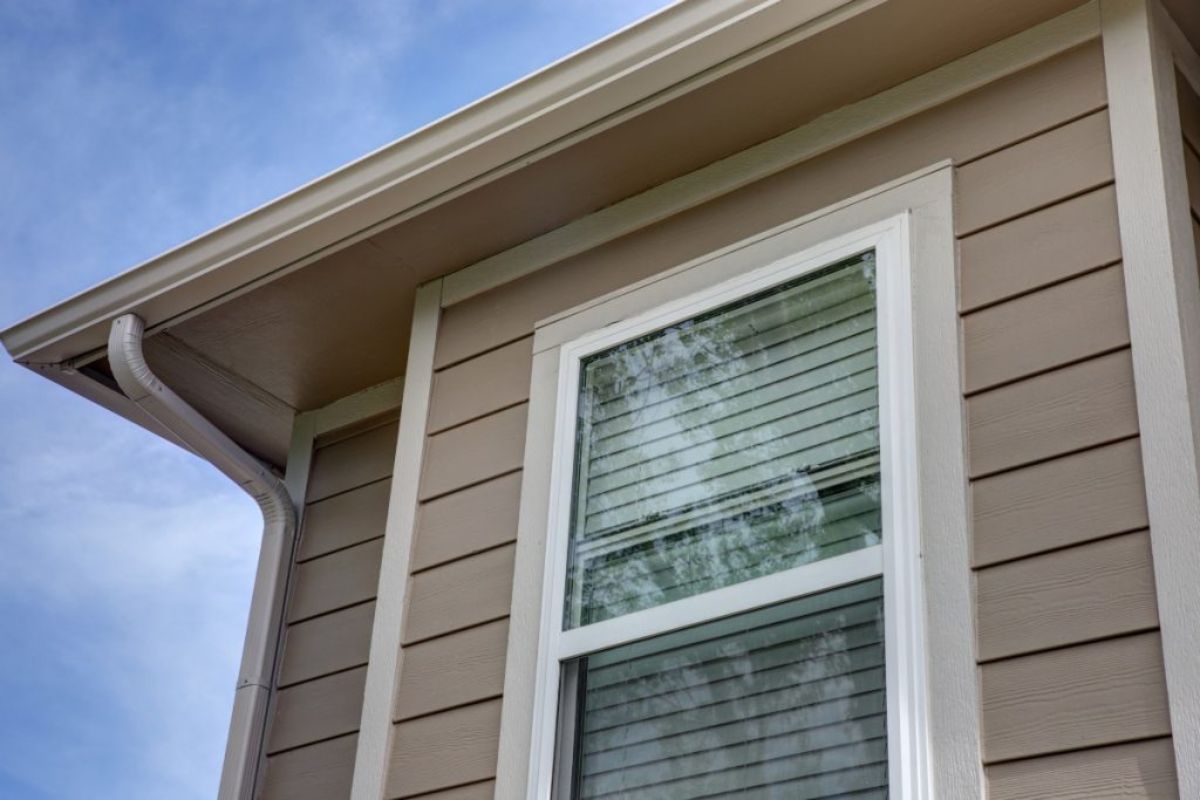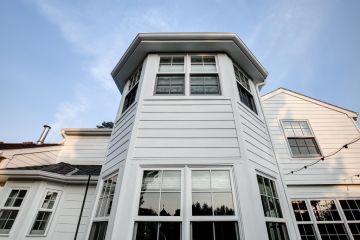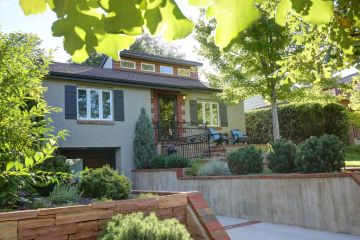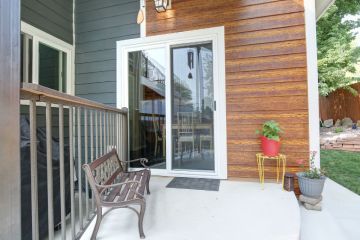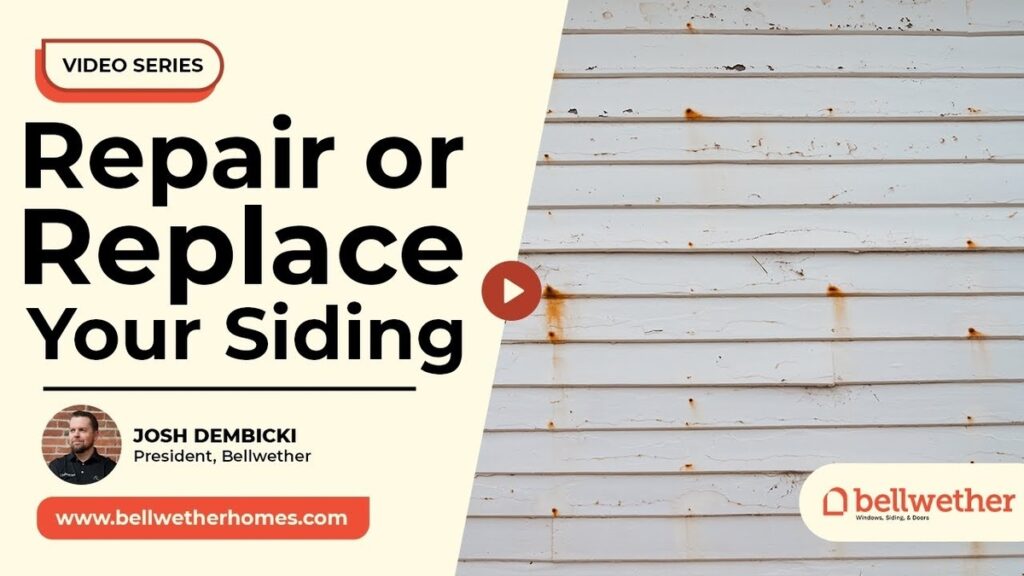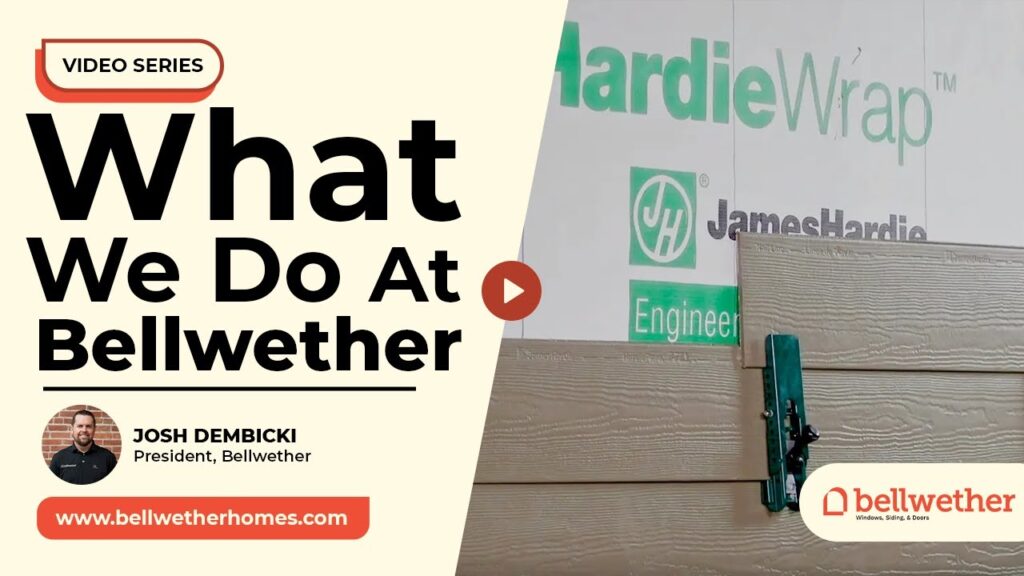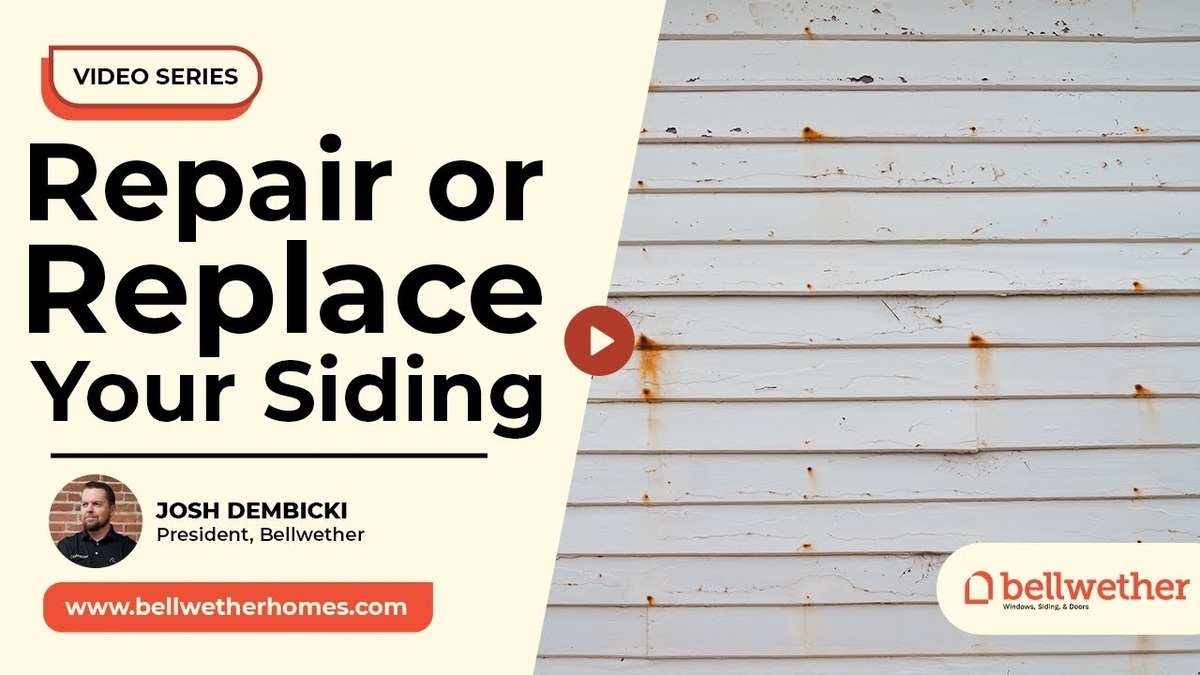Choosing high-efficiency windows for your home is an art and a science. “People live on mountain properties that they love, and they want windows that add to the aesthetic of their home without their beautiful view being disrupted,” says Stephen Chismarich, director of sales at Colorado Siding Repair. “But they also need to know that living at elevation can impact material delivery, installation, and performance.” Colorado Siding Repair has expanded its expertise to window installation, and as a Colorado company founded by mountain-based residents, they bring knowledge of high-altitude living to their business.
“Many windows are built out-of-state,” explains Cash Stricker, Colorado Siding Repair’s co-founder and project guide. “And when they’re shipped, they do here in Colorado what your Dorito bags do,” referring to the puffed-up potato chip bags lining the grocery store shelves. High-efficiency windows, which are traditionally filled with argon gas, will expand upon arrival in Colorado, bowing them into an hourglass shape—and this expansion only worsens on their trip up the mountain.
Eventually, like a chip bag, the windows will deflate into a normal shape, “But that’s evidence that there is an exchange taking place for the pressure to change,” says Stricker. Colorado Siding Repair is committed to considering the impacts of argon leakage, which immediately decreases the performance of high-efficiency windows.
Colorado Siding Repair has coined the term “Colorado Glass” to describe a window glazing design that they recommend to their clientele living in elevated mountain communities. “Colorado Glass is an air-filled package with capillary tubes,” describes Chismarich. This double-paned glass is filled with dead air that still creates a thermal break, and one-way tubes allow air to escape during expansion, without leaking away the window’s quality.
While argon gas, which is weightier than dead air, does offer a greater thermal break, Colorado Siding Repair’s Colorado Glass compensates for this loss with generous applications of low emissivity, or low-E, coating, which allows daylight and heat to pass through the window glass, but blocks harmful UV rays. This protects floors and furniture from fading, with the added benefit of the warming Colorado sunshine.
To maximize the effect, Colorado Siding Repair offers specialized double-paned glass packages—utilizing the window surface facing the inside of the home in addition to the inner surfaces sandwiching the air space. “The more coats of low-E you put on, the more it affects visible light transmittance,” says Chismarich, explaining that low-E will be rated low-E-1, -2, or -3 to indicate how many coats are on the inner surfaces.
Some homeowners may prefer lower-level low-E windows to avoid slight tinting. For those looking for another air-filled, energy-efficient option, Chismarich recommends one or two coats of low-E and an interior coating of i89. “i89 is an indium coating that has an additional ceramic layer on the room-side surface to prevent it from washing off or baking off—essentially, a hard coat—which reflects escaping heat back into the room, while the low-E coatings bounce back harmful UV rays to the outside,” Chismarich said. “So by applying this coating on the outside of the glass, you make up for the loss of the argon gas. It’s an important piece of technology for people living at elevation, and you can achieve the same R-values, [a material’s ability to resist heat transfer], that you would with gas-filled windows at a lower elevation—with a negligible price differential.”
Many homeowners in the know may ask about triple-paned windows, which do offer an extra measure of protection but without additional low-E or i89 coating. “It does provide a better R-value because of the extra glass,” says Chismarich, “But it’s marketing that tells people that to be energy-efficient, windows have to be triple-paned. That’s not true—and triple-paned might not even work in every situation.” For those enjoying the quietude of mountain living, triple-paned windows are only an unnecessary expense. “We do work with manufacturers who provide high-quality triple-paned wood windows that have metal cladding to protect from the elements, but those are pricier.”
Another trend among researched homeowners is fiberglass windows. “It’s a really stable, durable material that you’d like to have in the mountains,” agrees Chismarich, but this can’t be used in triple-paned windows. “That’s why they need to be asking for Colorado Glass.”
All double-paned options including hung (which opens vertically), slider (which opens horizontally), casement (which opens on a hinge, with a crank), and picture windows with awnings can be constructed from Colorado Siding Repair’s Colorado Glass.
Energy-Efficient Windows
Colorado Siding Repair is one of the fastest-growing Colorado businesses in the industry because of its expertise and careful attention to home exterior projects. Living and working in the mountains ensures a complete understanding and the best recommendation for your mountain home’s needs. They also offer design services to guarantee that your new windows are not only energy efficient, but they are also beautiful inside and out.
Learn more at https://coloradosidingrepair.com and call (303) 328-2769 to schedule a free consultation.


